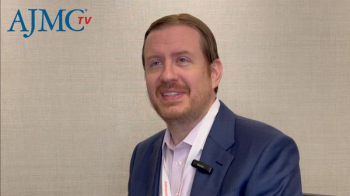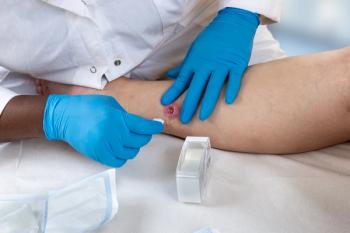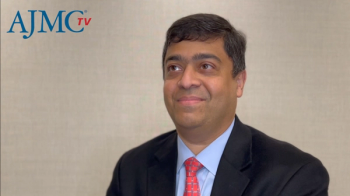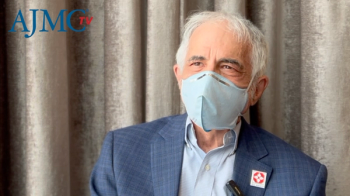
Real-World Data on Novel Hep C Treatments
While the cost of novel hepatitis C drugs has been rigorously debated, real-world data on the safety and efficacy of these drugs has now started showing up. A white paper released by CVS Health Research Institute in September of this year reported that in addition to the downward trend in utilization of sofosbuvir, which has cure rates of more than 95%, high discontinuation rates are being observed.
While the cost of novel hepatitis C drugs has been rigorously debated, real-world data on the safety and efficacy of these drugs has now started showing up. A white paper released by CVS Health Research Institute in September of this year reported that in addition to the downward trend in utilization of sofosbuvir, which has cure rates of more than 95%, high discontinuation rates are being observed. Overall discontinuation rates were around 8%, discontinuation rates among treatment-naïve patients were the highest at 8.7%, while patients who had been previously treated for hepatitis C, and presumably failed previous therapy, discontinued only 5.3% of the time.1
Several studies presented during the poster session, Viral Hepatitis and Liver Transplant, touched on the performance of these drugs in “real-world” patients, during the annual meeting of the American Association for the Study of Liver Disease, called The Liver Meeting 2014, held in Boston, Massachusetts, from November 7 to 11, 2014.
When authors evaluated the safety and effectiveness of sofosbuvir (SOF)-based therapies in patients with HCV recurrence after liver transplant, they found that the treatment was well-tolerated overall—a majority of the side effects were associated with the ribavirin (RBV) and interferon (IFN) treatment. The retrospective, multi-center study in 94 patients with post-transplant HCV recurrence included 4 comparator arms: pegylated IFN + RBV + SOF (group 1); simeprevir (SMV) + SOF (group 2); SMV + SOF + RBV (group 3); and SOF + RBV (group 4). HCV RNA, cell counts, and adverse events (AE) were compared between groups. The trial observed no statistical differences in demographics, genotype, weight, fibrosis, or laboratory parameters between the groups. Overall, 76% had generalized AE including fatigue, musculoskeletal complaints, headache and nausea, but the frequency of AE was similar between groups (P = 0.74). Serious AE were reported in 14 patients (6 anemia/cytopenia, 2 infection, 6 unrelated to therapy). A decrease in hemoglobin by >2 g/dL and development of significant anemia was more frequent in patients receiving RBV, while leukopenia and thrombocytopenia were more common in patients who received IFN. The need for growth factors was higher in the IFN and RBV containing groups and blood transfusions were more common in RBV containing groups. However, no changes in immunosuppression doses were needed during treatment for any of the groups. The authors conclude that longer term data will help confirm safety and effectiveness in “real-life” patients, minus the constraints of a clinical trial. Of the 94, 3 patients died during the course of the study: 1 from intracranial hemorrhage and 2 from progressive liver disease. The following sustained virologic response after 4 weeks of treatment (SVR4) data were available at the time of the meeting:
Group
SVR4
Relapse
1
3/3
0
2
10/13
2
3
1/1
0
4
12/19
5
P =N/S between groups
Another study evaluated a combination of daclatasvir (DCV) and SOF, minus interferon, in patients with severe recurrent hepatitis C (all genotype 1a), post an orthotopic liver transplant (OLT). One retransplant (A) and 5 primary OLT recipients (B-F) were treated: 3 with fibrosing cholestatic hepatitis (FCH) (A-C), 1 with decompensated recurrent cirrhosis (D), 1 with acute lobular hepatitis (E), 1 with cholestatic lobular hepatitis. SOF 400 mg/day, plus DCV 60 mg/day, were coadministered for 24 weeks. Patient C also received a lead-in with peg-IFN plus RBV and RBV was continued for an additional 24 weeks; patient E received 1 month of SOF/RBV prior to initiating SOF/DCV. Within 2 weeks of initiating treatment with SOF/DCV, the authors report a dramatic reduction in serum HCV RNA levels, and by 4 weeks, hyperbilirubinemia improved and liver enzymes normalized. Blood levels of tacrolimus, an immunosuppressant used to prevent organ rejection post-transplant, remained stable and therapy was well tolerated. The authors see great promise with these new oral antivirals in suppressing HCV and reversing the changes of FCH and liver decompensation post-OLT.
The safety and efficacy of 12 weeks of SOF + SMV in 17 liver transplant (LT) recipients with genotype 1 found that the treatment was well-tolerated, and did not influence tacrolimus levels. The patients were started on SOF 400 mg daily and SMV 150 mg daily between January and May, 2014, and then seen 2, 4, 8, and 12 weeks after initiating treatment. The median follow-up was 8 weeks (range 2 to 12 weeks). The median pre-treatment fibrosis score was 2 (range 0-4) and there was 1 cirrhotic patient. Fourteen patients were on tacrolimus, 2 on cyclosporine, and 1 on rapamycin. Of the 17 patients, immunosuppression doses remained unchanged in all except 1 patient who required a dose reduction in tacrolimus; creatinine and hemoglobin levels remained unchanged throughout treatment. While nearly 50% of patients reported no side effects, common side effects that were reported included gastrointestinal symptoms, headache, pruritus, myalgias, and non-life-threatening hyperkalemia. The end of treatment response (undetectable HCV RNA) was 100% (17/17), while SVR 12 was 80% (12/15), with 2 cases pending. Considering that the SOF/SMV combination was well tolerated, the authors recommend conducting additional studies with this drug combination in liver transplant recipients.
References
- CVS Health Research Institute provides first look at treatment with new hepatitis C therapies [press release]. CVS Health: Woonsocket, RI; September 17, 2014. http://www.cvshealth.com/newsroom/press-releases/cvs-health-research-institute-provides-first-look-treatment-new-hepatitis-c.
Newsletter
Stay ahead of policy, cost, and value—subscribe to AJMC for expert insights at the intersection of clinical care and health economics.

















































